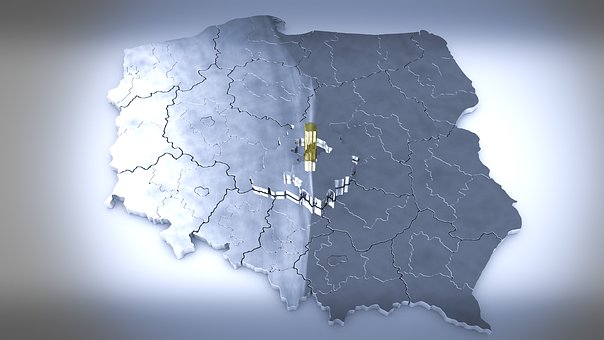Anal Incontinence After Childbirth

. Of these patients, 60 - 80% were asymptomatic after 12 months.
It is important for the clinician to try to elicit from the patient exactly what their symptoms are. Many women with faecal incontinence are reluctant to discuss the problem with their GP or any other healthcare professional because of embarrassment. Mothers who suffer from an anal sphincter injury require specialist treatment immediately after they deliver their child, together with proper follow-up referral, particularly in the first 12 months after giving birth.
What Is An Anal Sphincter Injury?
The following are classifications of anal sphincter injury:-

- 1st degree - Injury to skin only.
- 2nd degree - Injury to the perineal muscles but not the anal sphincter.
- 3rd degree - Injury involving the anal sphincter complex.
o 3a - Less than 50% external anal sphincter torn.
o 3b - More than 50% of external anal sphincter torn.
o 3c - Internal anal sphincter torn.
3rd and 4th degree tears result in injury to the anal sphincter. It is absolutely essential that a thorough examination of the perineum and vagina including a digital rectal examination is performed after a vaginal delivery. An anal sphincter injury depends upon several risk factors. The following are risk factors for an anal sphincter injury in women:-
Antenatal risk factors:
- birth weight over 400 grams.
- persistent occipito-posterior position (baby with the head down but facing the mother's tummy).
- where a woman has never given birth before.
- induction of labour.
Intrapartum Risk Factors:
- epidural analgesia.
- 2nd stage of labour longer than one hour.
- instrumental delivery (particularly by forceps).
- mid-line episiotomy.
Recognising An Anal Sphincter Injury.
It is thought that the incidence of anal sphincter injury is underestimated to a lesser or greater extent by the lack of knowledge of some healthcare professionals in identifying the injury in the first place. In one study 41% of medical trainees and 16% of midwives incorrectly classified a partial or complete tear of the external sphincter as a 2nd degree tear which actually specifically excludes damage to the anal sphincter. "Occult" anal sphincter injuries are those that cannot be detected on clinical examination alone but that are subsequently identified by endo-anal ultrasound. One study found that true "Occult" anal sphincter injuries occurred in only about 1.2% of 254 women.
Managing Obstetric And Sphincter Injury after Childbirth.
The Guidelines of the Royal College of Obstetricians and Gynaecologists recommends that 3rd and 4th degree tears are repaired within a few hours of delivery in an operating theatre under regional or general anaesthesia by an experienced doctor. Primary repair of the external anal sphincter uses either an "end-to-end" or "overlapping" surgical technique and is most often performed by an obstetrician. The internal anal sphincter should also be identified and repaired if necessary. A secondary repair, which means one that is performed to treat faecal incontinence months or years after delivery, is usually performed by a colorectal surgeon.
Additional Treatments.
There is evidence that women with a sphincter injury who received prophylactic antibiotics (broad spectrum antibiotics) at the time of the repair had a lower rate of wound infection following birth. In addition, the use of laxatives is associated with an earlier and less painful bowel motion thus earlier discharge from hospital. However, the addition of a bulking agent resulted in more incontinence in the early post-natal period and is not therefore recommended. In a recent national survey 94% of obstetricians recommended laxatives.
Following Up 3rd And 4th Degree Tears.
The Royal College of Obstetricians and Gynaecologists recommend that women are offered physiotherapy and pelvic floor exercises for 6 - 12 weeks after an anal sphincter repair. Also that they should be reviewed 6 - 12 weeks after delivery by a consultant obstetrician or gynaecologist, preferably in a dedicated multi-disciplinary perineal clinic. In fact, fewer than two-fifths of all UK obstetricians provide follow up for longer than 6 weeks for women who have undergone primary repair and only 10% provide follow up beyond 6 months. Women with incontinence or pain at follow up should be referred to a specialist gynaecologist or colorectal surgeon for endoanal ultrasonography and anorectal manometry. The routine assessment of all women with tears or symptoms of faecal incontinence at a perineal clinic increases the detection of missed injuries.
Managing The Problems.
Anal sphincter injuries are associated with short and long term problems. Conservative approaches include:-
- Avoidance of high fibre foods, spicy foods and food with a high caffeine content.
- Treatment with bulking agents and constipating agents such as loperamide or codeine phosphate.
- Use of anal plugs.
- Physiotherapy to increase the strength of pelvic floor muscles and increase the anorectal angle, which contributes to bowel control.
- Bowel training, which is similar in concept to bladder training; patients learn to resist the urge to open their bowels, gradually increasing the time over which this can be done.
- Biofeedback retraining, which is a learning strategy that teaches subjects how to control biological processes (in this instance, strengthening anal sphincter contractions by viewing the readout from a pressure-sensitive probe in the anus); it has been shown to be effective in short term symptom control even in the presence of structural anal sphincter damage.
- Sacral nerve stimulation.
- Surgical approaches - secondary repair by specialist colorectal surgeon.
The Prognosis.
Over the past 10 years studies have indicated that 60 - 80% of women are asymptomatic at 12 months. Of those remaining symptomatic, most report incontinence of flatus only. After a secondary report long term continence improves in 58% of women.
Future Caesarean Sections.
At present, it is unclear whether a caesarean section can prevent the development of anal incontinence in women with previous obstetric anal sphincter injuries. A caesarean section may protect against anal sphincter injury if performed electively or at an early stage of labour. Indeed, anal incontinence can develop in women after elective and pre-labour caesarean sections. It is important that the clinician discusses the risks and benefits of potential modes of delivery with women who have suffered a previous anal sphincter injury before any subsequent deliveries.
Copyright (c) 2010 Julie Glynn
by: Julie Glynn Tips for Parents to Choose the Best College for their Children Drug Rehabilitation May Be The Only Solution For Your Teenager Photo Book Ideas: Kids Photo Books Thirteen Ways To Handle Stress And Keep Your Mind Calm Cooking With Children: How To Make An Easy Three-course Meal Tips For Dating A Woman With Children Is Having Sex Early Ok? Why Or Why Not Great Xmas Gifts And Presents For Your Children Or Grandchildren Fight Childhood Obesity at the Farmers Market How To Choose Your Child's Pediatrician Teach Nail Care To Kids While They Are Still Young Online Illustrated Children's Stories - Lyre Bird Park Read A Children's Book Online - Lyre Bird Park Lyre Bird Park - Children's Online Stories